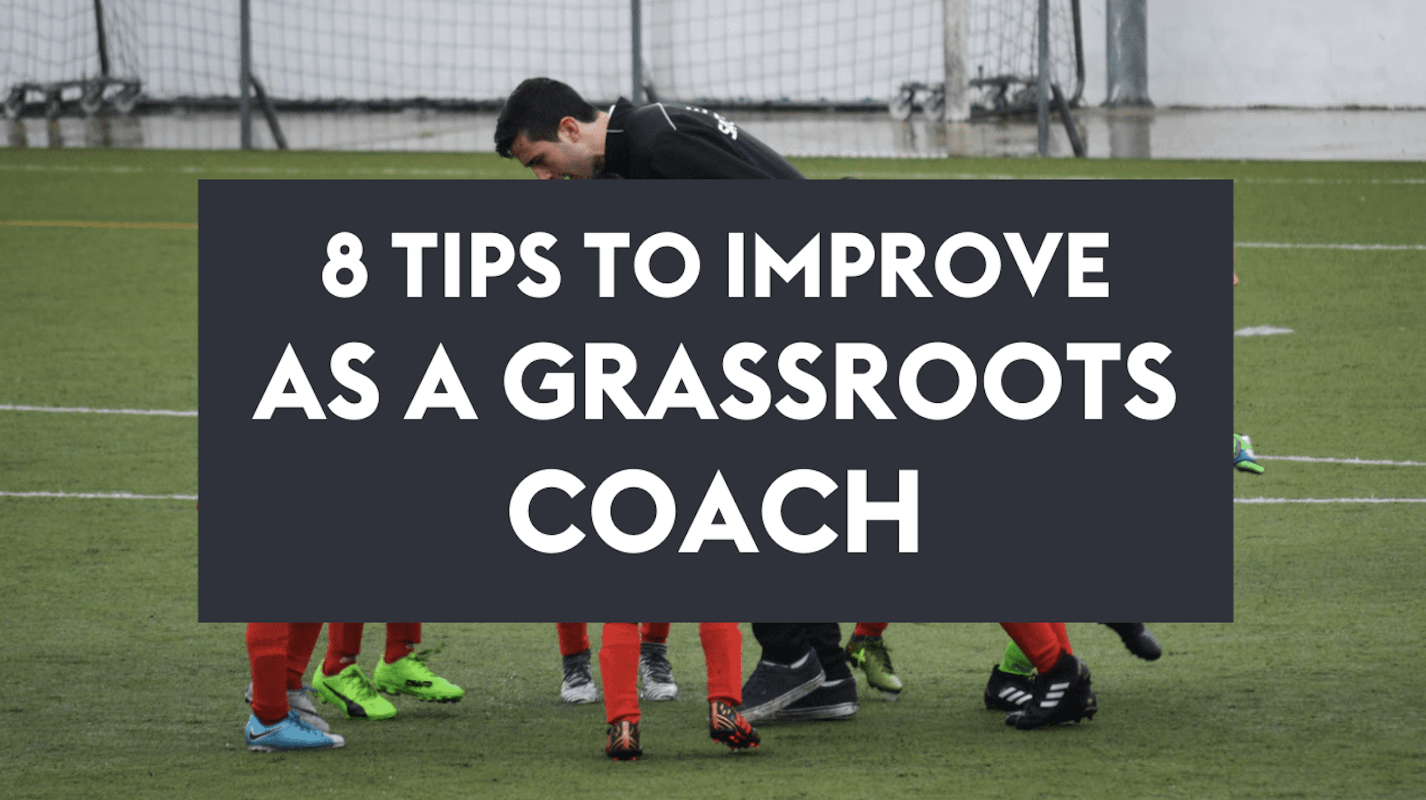No matter how long you have been coaching, we are here to help you push yourself and your players to that next level.
In this article, we take a look at eight ways in which you can improve as a grassroots coach.
1. Plan your sessions
Your time with your players is precious, so make sure you are planning each session to ensure no time is wasted on setting up, transitioning to different parts of the session, etc.
Your sessions should have structure (warm up, skills, small sided game, etc) and, ideally, a theme , e.g. pressing, moving through the thirds, counter attacking, etc. Even things like water breaks and cooling down periods should be considered to ensure you are making the most of your time.
The Coaching Manual not only has more than 3,000 pieces of excellent coaching content, but Premium subscribers can also take advantage of all its session-planning and design tools from just £5/$7 a month. Sign up here.
2. Make an effort to understand your players
Communication goes both ways, and a good grassroots coach is able to understand their players as individuals as well as as a team. Players - particularly children - have different learning styles, motivations, and of course strengths and weaknesses, so you should make an effort to tailor your approach to training accordingly. Read our article ‘How to Better Understand your Players’ for more advice.
3. Observe other coaches
Whether you have been coaching for six months or twenty years, there’s always more to learn. There’s no better way to do this than by picking the brains of other coaches - coaches with more experience, coaches in similar situations to yourself, even opposition coaches. If you’re facing a particular problem, chances are you’re not the first. Speak, observe, and listen to other coaches wherever possible.
The Coaching Manual is full of broadcast-quality training session videos as well as insightful interviews and discussions, all with top quality coaches who have been there, done that. Why not get started by watching some of TCM’s past webinars featuring long form coaching discussions:
The Craig Mulholland Webinar, Head of Academy at Rangers FC.
4. Progress your sessions
A good way to develop players’ understanding of your goals, and to introduce more challenging practices, is to make sure you are progressing your training sessions.
For example, introduce multiple balls into a passing session. This helps players improve decision-making, allows them to perform in a pressurised environment similar to a match day situation, and also adds added excitement that helps training sessions to be enjoyable for players.
A progression does not necessarily have to make a particular practice more challenging however - it can be used as a way to make training easier for players if they are struggling. For example, in this defending practice by Terry Moore, you will see suggestions on how to make the drill more challenging and easier for players.
5. Support your players’ technical development
If your players don’t have the level of technical ability to carry out what you ask of them it can not only dishearten and stall the development of the individual but that of the whole team as well, as the session can break down.
It’s in your best interests to ensure your players are brushing up on their technical skills away from the training pitch, because the better your players are at the technical fundamentals of the sport, the less time you will waste correcting behaviour in training.
Many coaches around the world use TopTekkers to ensure that their players possess the skills required to reach their potential in soccer. For more information, visit www.toptekkers.com.
6. Evaluate yourself
You may have watched various coaches on The Coaching Manual, and observed coaches in your own circles, but what do you know about your own coaching style? As with any pursuit, the best way to improve is to understand where you are currently.
Record your training sessions, watch yourself back. Is there a particular coaching style you’re trying to emulate? A particular coach you admire? What hits the mark? What doesn’t? Watch how your players react to your instructions - do they understand what you’re asking them? Do they listen when you are speaking?
A general rule of thumb is to ask yourself regularly, after each training session:
- 1) What went well?
- 2) What could I improve?
- 3) What would I do differently next time?
7. Have a vision for your season
Of course, this can include setting targets such as league position and goals, but you should also remember to focus on less quantitative measures of success, such as ‘work on improving our team shape’ or developing a team/club philosophy.
The Coaching Manual allows Premium subscribers to take advantage of its intuitive, easy-to-use Season Planner tool, allowing coaches to organise their strategy with just a few clicks. Click here.
8. Make sure your players are having fun
As UEFA A Licence course contributor Martin Hunter says, if your players aren’t smiling and sweating when they come off the training pitch you’re doing something wrong. Children play football because they enjoy it. Make sure you are providing the right balance between a competitive environment and space for them to express themselves, and keep your sessions fresh - your players will thank you for it.
How The Coaching Manual can help
The Coaching Manual can help you every step of your coaching journey - what do you get with a Premium subscription?
- Our LMA Masterclass series featuring sessions from David Moyes, Rene Meulensteen, Alan Irvine, Steve McClaren, and more
- Access to 100s of other exclusive sessions
- Full access to our session creation and season planning tools
- The same coaching content used by the Professional Footballers' Association
- Coaching Focus Web Series (Seasons 1 & 2)
For the equivalent of just £5 ($7) a month when you pay annually, sign up and start taking advantage of all that The Coaching Manual has to offer today!


